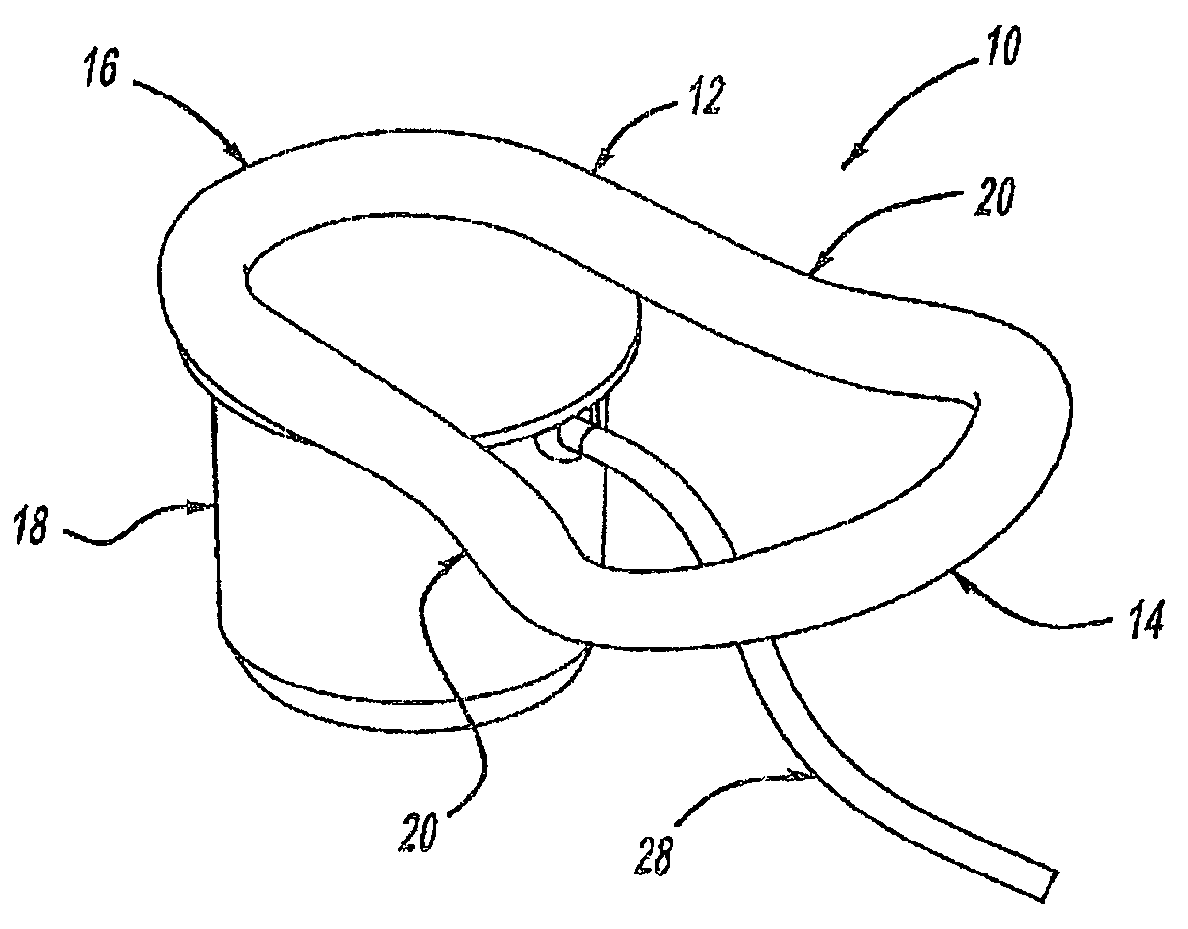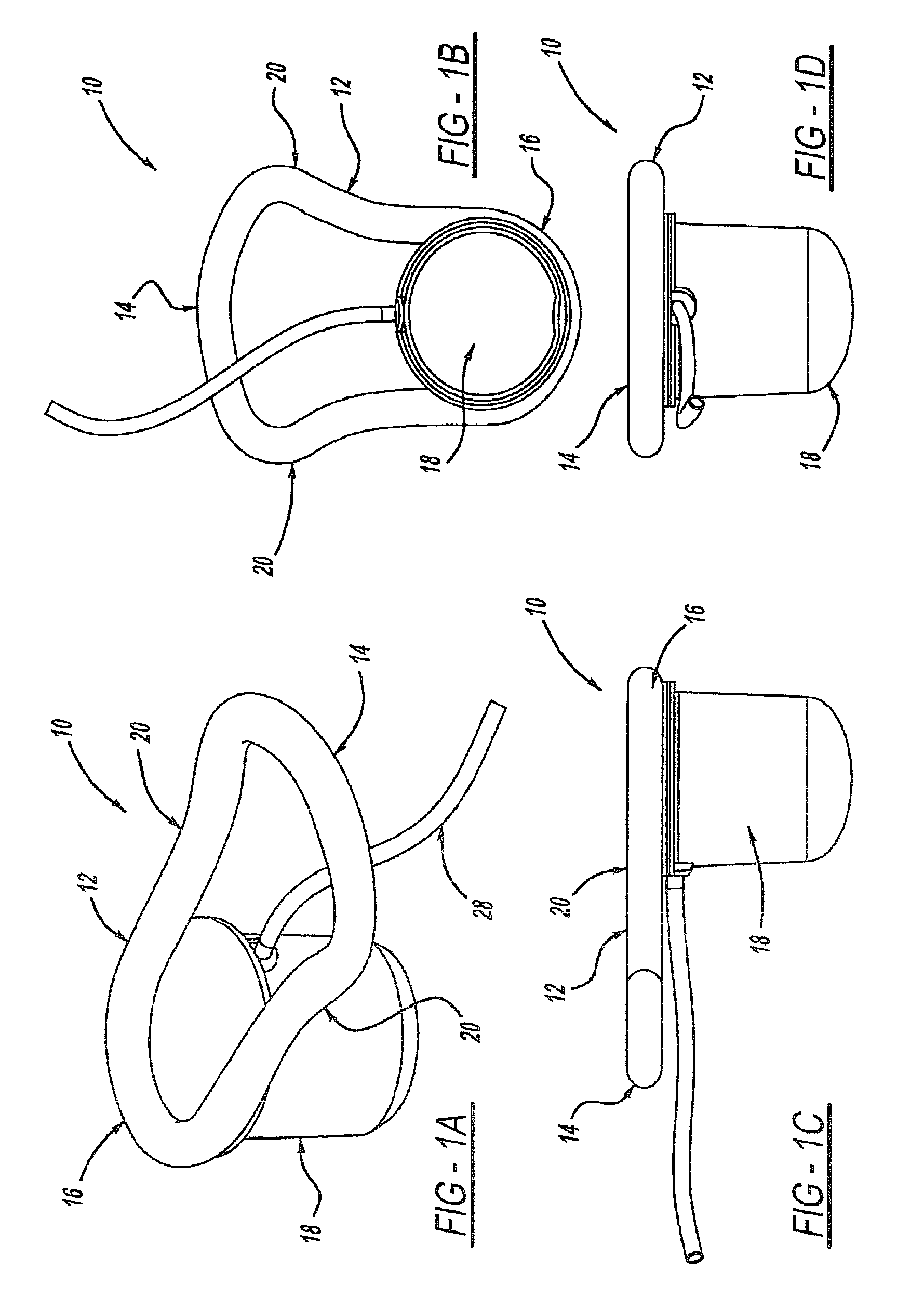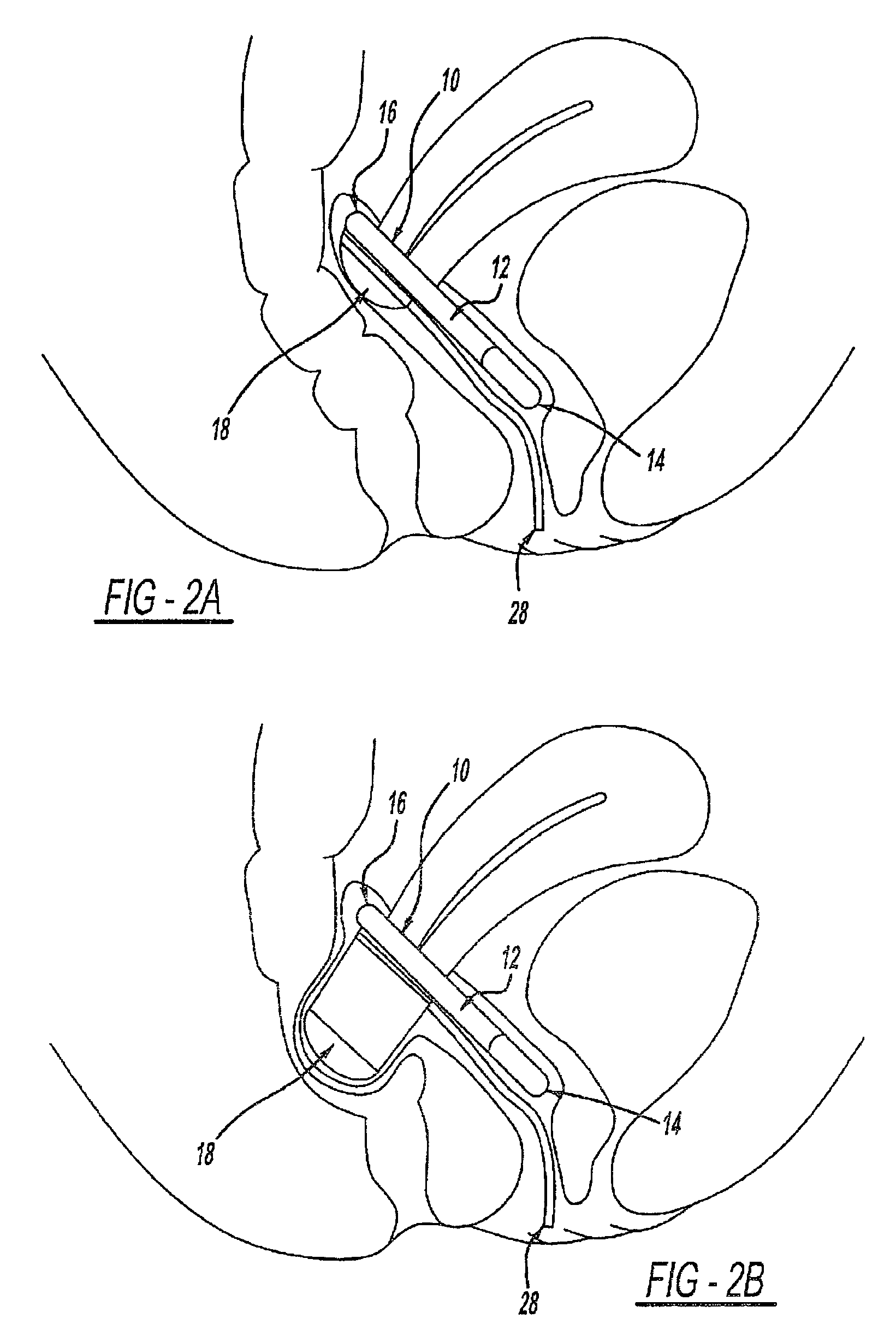Intra-vaginal device for fecal incontinence
a technology of incontinence and intravaginal tube, which is applied in the field of intravaginal tube, can solve the problems of reducing the quality of life of women, difficult to treat conditions, and many treatments that have previously failed, and achieves the effect of preventing rotation and translation
- Summary
- Abstract
- Description
- Claims
- Application Information
AI Technical Summary
Benefits of technology
Problems solved by technology
Method used
Image
Examples
example 2
[0142]The following are manufacturing instructions for assembling the device.
[0143]Apply Silicone Adhesive to Springs.
[0144]Insert Wire forms into Springs and cure adhesive.
[0145]Insert assembly into outer tubing.
[0146]Bond free ends of tubing together and cure adhesive.
[0147]Bond inflation tube and balloon bottom to balloon, cure assembly.
[0148]Bond balloon assembly to base assembly and cure.
[0149]Throughout this application, various publications, including United States patents, are referenced by author and year and patents by number. Full citations for the publications are listed below. The disclosures of these publications and patents in their entireties are hereby incorporated by reference into this application in order to more fully describe the state of the art to which this invention pertains.
[0150]The invention has been described in an illustrative manner, and it is to be understood that the terminology which has been used is intended to be in the nature of words of descrip...
PUM
 Login to View More
Login to View More Abstract
Description
Claims
Application Information
 Login to View More
Login to View More - R&D
- Intellectual Property
- Life Sciences
- Materials
- Tech Scout
- Unparalleled Data Quality
- Higher Quality Content
- 60% Fewer Hallucinations
Browse by: Latest US Patents, China's latest patents, Technical Efficacy Thesaurus, Application Domain, Technology Topic, Popular Technical Reports.
© 2025 PatSnap. All rights reserved.Legal|Privacy policy|Modern Slavery Act Transparency Statement|Sitemap|About US| Contact US: help@patsnap.com



